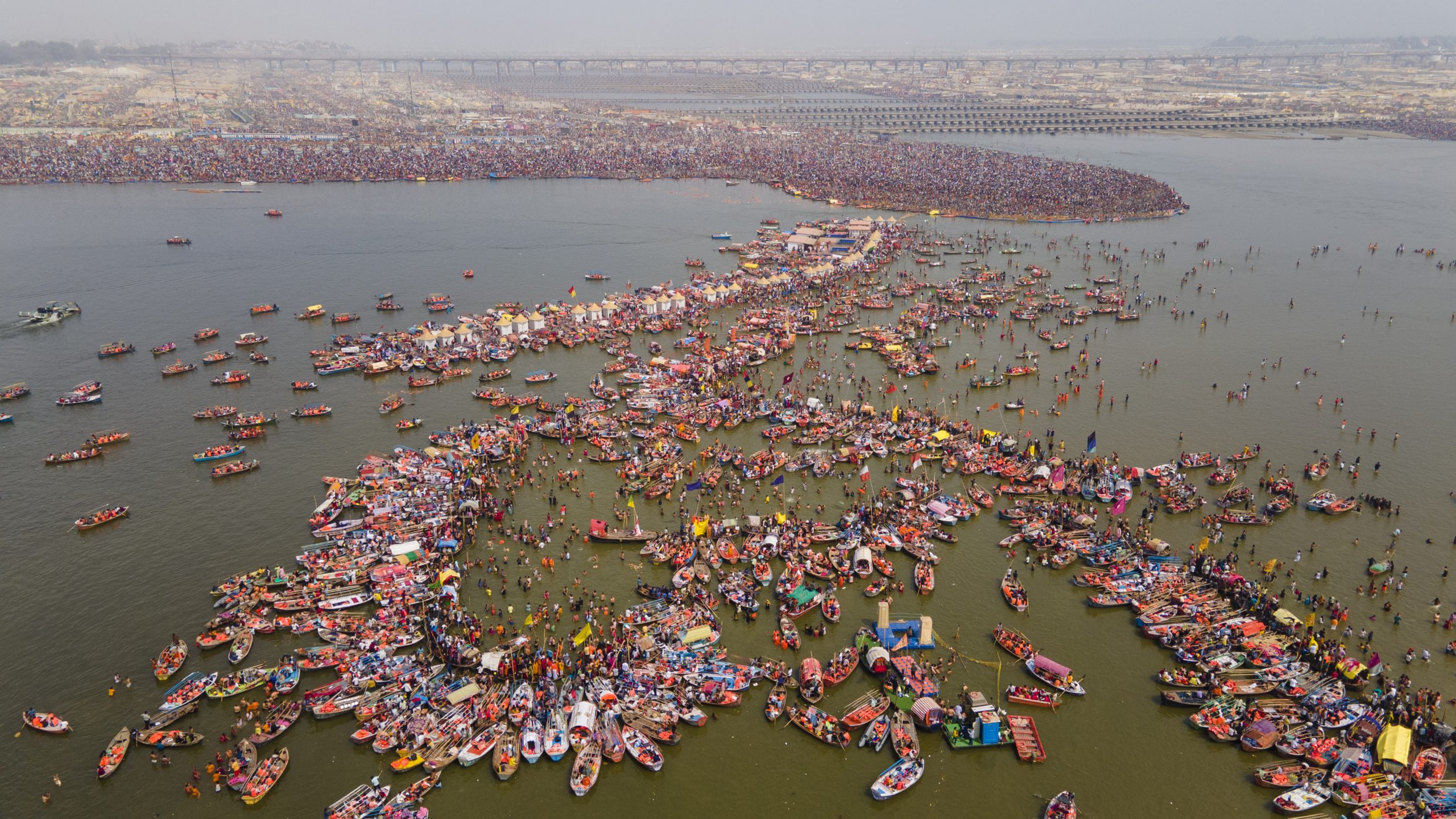Prayagraj, Mar 2: “My uncle rescued his sister from the river by her hair as she slipped under the water amidst the chaos,” recalls local lawyer Niranjan Lal, reflecting on the tales of the 1954 Kumbh Mela stampede he learned from his aunt, a survivor of the event.
This event marked the first Kumbh in Allahabad after gaining independence, with the tragic stampede occurring on February 3 during Mauni Amavasya. Official reports indicated that hundreds lost their lives in this incident.
Seventy-one years later, on January 29, a stampede occurred again on Mauni Amavasya as thousands aimed to enter the Triveni Sangam waters for the ‘amrit snan’.
Lal, 67, and his wife were staying in a Swiss cottage at Sector 6 of Mahakumbh Nagar when they received a call from their son late at night, warning them about the stampede at the Sangam.
“We chose to remain in the camp until daylight, and around 11 am, we headed to Dashashwamedh Ghat on the Ganga, near Sector 6. The area was filled with large crowds, both in the mela and on the streets. We were aware of the earlier tragedy, so we stayed alert, and being locals, we knew how to navigate in case the crowd became overwhelming,” Lal shared with PTI.
“However, we did not return home feeling intimidated. My wife continued her stay until the ‘kalpwas’ period finished, honoring our family’s long-standing tradition,” he mentioned.
Lal hails from an old Allahabad family (renamed Prayagraj in 2018), many of whom have participated in ‘kalpwas’ and rituals at every Kumbh Mela held here since independence.
His wife, Saloni Niranjan, upheld the family customs, participating in the rituals at this year’s Maha Kumbh following her mother-in-law’s passing in 2019.
“We got married in 1988, and shortly after, the 1989 Kumbh Mela occurred. Since then, my wife and I have been part of every subsequent Kumbh. The events of 1954 are stories my uncle and aunt often recalled. She once described how my father’s elder brother saved her from drowning that day,” Lal reminisced, noting that his aunt, born in the 1920s and who also performed the rituals, passed away in 1986.
Lal’s father, Govind Prasad, was at the family camp in the mela area when the disaster struck.
The 1954 stampede was labeled a “national tragedy” at the time.
Akshat Lal, 32, Niranjan Lal’s son, mentions that he frequently heard stories about past Kumbh Melas from his grandmother and aunt, whose mother was also rescued during the 1954 stampede.
“The tragedy’s magnitude left the entire nation in shock. Almost every old family in Allahabad has a personal tale related to it or knows someone who does,” he told PTI.
This young scholar even authored a 100-page book titled “Kumbh: A Divine Show at Allahabad” in 2013, conducting extensive research on the topic.
A subsequent stampede occurred at Allahabad Junction (now Prayagraj Junction) during the 2013 Kumbh Mela, claiming numerous lives.
Following the 1954 stampede, an inquiry committee was established, leading to several recommendations aimed at enhancing crowd management and ensuring the safety of pilgrims.
“Looking at Maha Kumbh 2025, a VVIP culture was promoted, along with aggressive marketing and a ‘144 years’ theme attracting crowds to the mela. The authorities seemed somewhat complacent, and certain celebrities on social media declared that the arrangements were ‘excellent,’ which likely contributed to the overcrowding and subsequent stampede,” he claimed.
Nonetheless, the Uttar Pradesh government asserted that sufficient arrangements were in place, with the theme itself being ‘Bhavya Divya Surakshit Maha Kumbh’.
PTI spoke to several other city residents who either witnessed the recent stampede or its aftermath or knew someone present at the mela.
Renu Devi, a domestic worker, shared that she saw piles of footwear and bags at the ghats, with many items floating in the river on the day of the stampede.
“I watched as people were transported in ambulances; panic was rampant,” she recounted.
For individuals like Devi, however, faith outweighs fear, as she stated, “I took a holy dip five times during this Kumbh, mostly after the stampede.”
The Maha Kumbh, a massive event held every 12 years, took place this year from January 13 (Paush Purnima) to February 26 (Mahashivratri), attracting grand processions of Naga Sadhus and three ‘Amrit Snans’. The significant religious gathering saw an unprecedented turnout of over 66 crore pilgrims during this period.
Official figures report at least 30 fatalities and 60 injuries from last month’s stampede. However, numerous opposition parties and their leaders have challenged the authenticity of the reported toll, asserting that actual casualties are significantly higher.
A local commented, “I know some people who were present during the stampede. Considering what they witnessed that night, the number of 30 seems disproportionately low given the vast crowd.” The author Kama Maclean noted in her 2008 book “Pilgrimage and Power: The Kumbh Mela in Allahabad 1765-1954” that while researching in Uttar Pradesh, she was “struck by the number of individuals whose immediate reaction was to recount stories of the 1954 Kumbh Tragedy, either from their own experiences or those of their parents, relatives, or acquaintances.”
Advocate Lal expressed, “We in Allahabad feel fortunate that our city hosts the Triveni, eagerly awaiting it every 12 years, but there’s always an underlying apprehension about the possibility of a stampede.” (PTI)


Leave a Reply